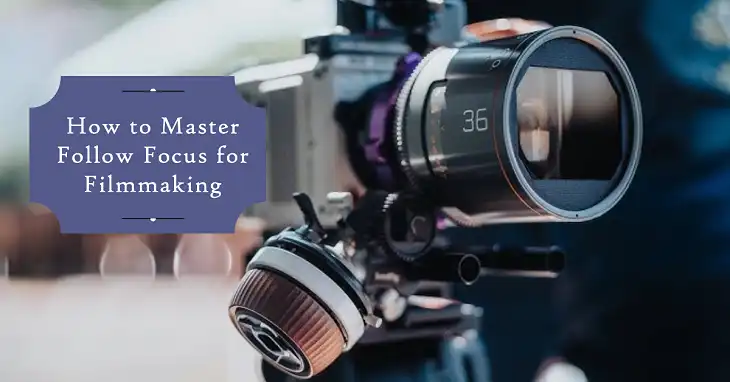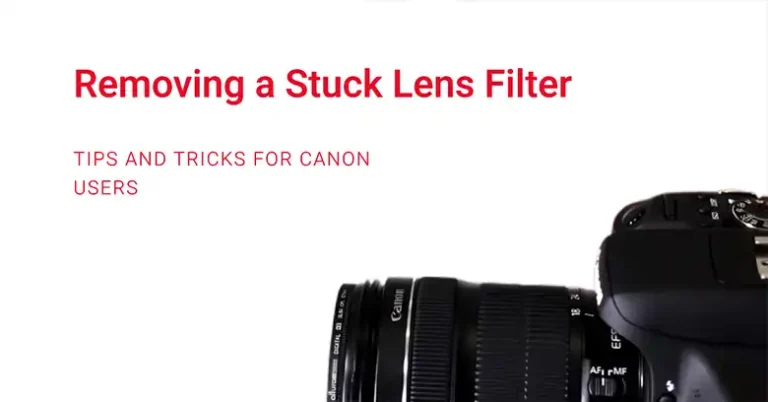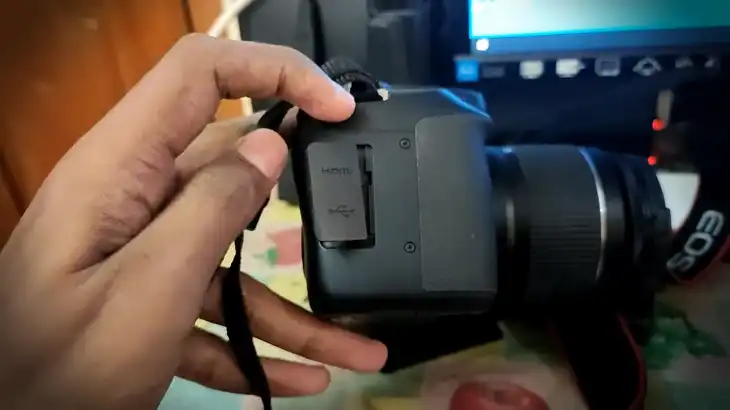How to Use Follow Focus for Filmmaking?

Follow focus is a manual system used in filmmaking to help achieve sharp focus during dynamic shots. It consists of a set of gears and a focus wheel, allowing filmmakers to pull focus smoothly without touching the lens directly. Mastering it is key for creating professional-quality video content.
What Are Follow Focus Systems?
A follow focus system is a tool used to adjust the focus of a camera lens smoothly and accurately. Unlike using the focus ring directly, the follow focus system allows filmmakers to make more controlled and repeatable focus adjustments. This setup is widely used in film productions for creating professional-looking shots, particularly when tracking moving subjects or executing complex focus transitions. The system typically includes a focus wheel, lens gear rings, and marker discs that allow you to mark specific focus points.

The main benefit of using a follow focus is that it provides greater precision and consistency in focus pulls, enabling filmmakers to keep up with fast-paced scenes and maintain focus on subjects even when they are in motion. This level of control is not possible with traditional autofocus systems, which often struggle with rapid changes in subject distance or complex scenes with multiple focus points.
Understanding the Core Components of Follow Focus
The follow focus system is made up of several key parts, each contributing to its functionality. The focus wheel or knob is the primary control element that allows for smooth and accurate focus adjustments. It is connected to the lens gear rings, which are mounted on the camera lens to facilitate seamless movement. Additionally, marker discs are used to mark focus points. These components work together to ensure smooth and precise focus pulls, even in challenging shooting environments.
When and Why to Use Follow Focus
Follow focus is particularly useful in dynamic shooting scenarios, such as when tracking moving subjects or capturing fast-paced action scenes. For example, in a dialogue scene where the camera shifts focus between two characters, a follow focus system ensures that transitions are smooth and visually appealing. It’s also indispensable in macro shots, where even slight focus shifts can significantly alter the image.
Beyond that, follow focus is essential for rack focus shots, where the focus is deliberately shifted from one subject to another within the same frame. Without a follow focus, achieving the smoothness and precision required for such shots can be very difficult.
How to Choose the Right Follow Focus System
Selecting the right follow focus system depends on several factors such as budget, setup, and the type of shooting you do. For beginners, a basic mechanical system priced around $100 to $300 can suffice. These models are straightforward and easy to use. However, for more advanced filmmakers, a wireless follow focus system like the Tilta Nucleus-M, which can range from $600 to $1,200, might be a better option due to its flexibility and ability to control focus remotely.
Another factor to consider is compatibility with your camera rig and lenses. Some follow focus systems are designed to work with specific camera models and lens sizes, while others offer universal compatibility. For most filmmakers, a system that supports various lenses and can be easily mounted on a variety of rigs is ideal.
How to Use Follow Focus
To use a follow focus effectively, start by setting up the system. Attach the lens gear ring to your lens and make sure it is tightly secured. Next, mount the follow focus system to your camera rig, aligning the focus wheel with the lens gear. Tighten the mounting screws to ensure everything is stable. Once the setup is complete, turn the focus wheel to check that it moves the lens smoothly without any slippage.

Next, mark your focus points. Use a marker disc to indicate key points of focus during a shot. This helps to ensure that focus shifts are precise and repeatable, which is crucial in complex scenes. If you are shooting a dialogue scene, for example, mark the focus points for each actor’s position to ensure smooth transitions.
Finally, practice executing focus pulls. Start with simple shots and gradually move to more complex sequences as you gain confidence. Keep your movements slow and steady, as jerky focus shifts can distract viewers and break the flow of the scene.
Tips and Techniques for Mastering Follow Focus
One of the best ways to master follow focus is to pre-plan your focus transitions using storyboards or shot lists. This allows you to anticipate where focus changes will be needed, making the execution smoother during the shoot. Additionally, if you’re working on a production team, coordinate with your 1st Assistant Camera (AC), who typically handles focus pulling on professional sets.
Use features like focus peaking available in many modern cameras to assist in visualizing which parts of the frame are in focus. This is especially helpful when working in low-light conditions or with lenses that have a shallow depth of field.
Common Challenges and How to Overcome Them
One common issue with follow focus systems is lens breathing, where the focal length appears to change as you adjust focus. To minimize lens breathing, use a lens specifically designed for video work or opt for a cinema lens. Another problem is focus drift in long takes. This can be countered by rehearsing shots thoroughly and ensuring that your gear is well-calibrated before filming.
If you encounter slippage in the focus wheel, check the tension settings and ensure that the lens gear is properly aligned. For wireless systems, ensure that there is no interference that could disrupt the signal between the controller and the receiver.
Advanced Follow Focus Techniques
For more advanced filmmakers, consider experimenting with rack focus techniques to shift focus deliberately between subjects. This can be used to guide the viewer’s attention or reveal new information within the frame. Another advanced technique is using follow focus during tracking or panning shots. This requires a steady hand and good coordination to keep the subject in focus while the camera is moving.
Troubleshooting Follow Focus Issues
If you notice that the focus points aren’t aligning correctly, it may be due to marker misalignment. Recalibrate the focus system and adjust the markers as needed. For signal interference in wireless systems, switch to a different frequency channel to minimize disruption.
Wrapping It Up
Using a follow focus system can significantly enhance the quality of your filmmaking, making your shots look more professional and polished. It allows for greater creative control and opens up possibilities for complex shots that would be difficult to achieve with autofocus alone. Practice and familiarity with your gear are key to mastering follow focus, so start with simple shots and work your way up to more complex scenes.
FAQs
Can you use a follow focus with any lens?
Yes, most follow focus systems can be used with a variety of lenses, as long as the lens gear rings fit properly.
What’s the best follow focus system for beginners?
A mechanical follow focus system priced around $100 to $300 is ideal for beginners due to its ease of use and affordability.
Is wireless follow focus necessary for all shoots?
No, wireless systems are mainly used for complex shots or when the camera operator and focus puller need to work independently.
How do you maintain a follow focus system for longevity?
Regularly check the tension settings, clean the gear rings, and store the system in a protective case when not in use.






